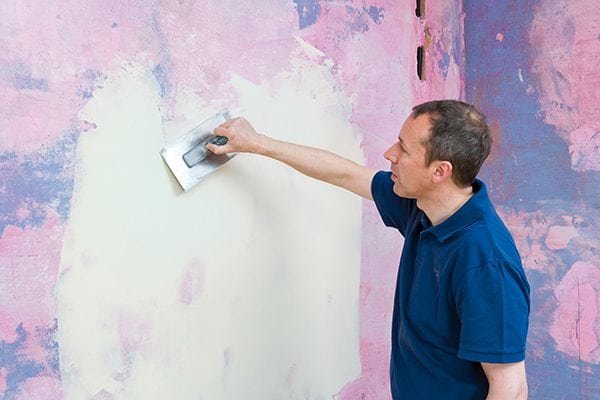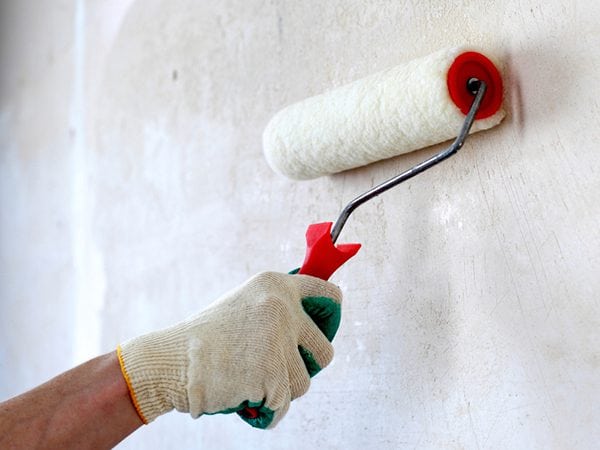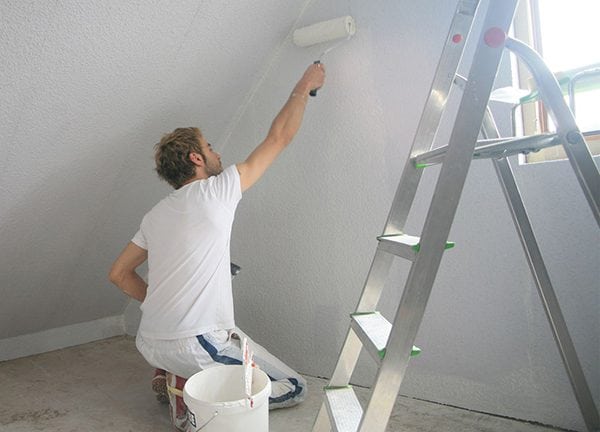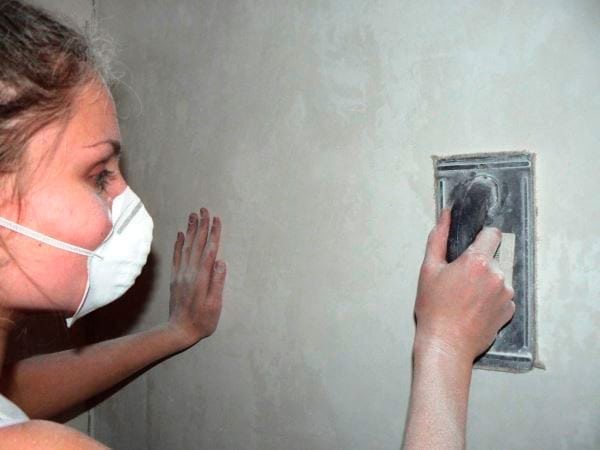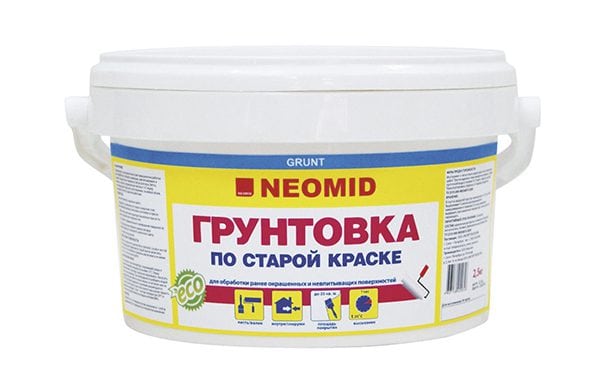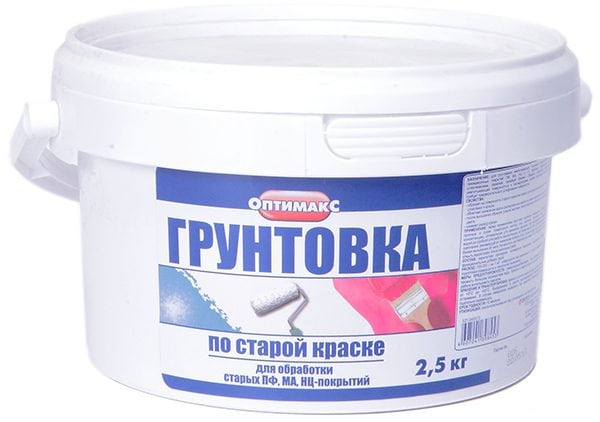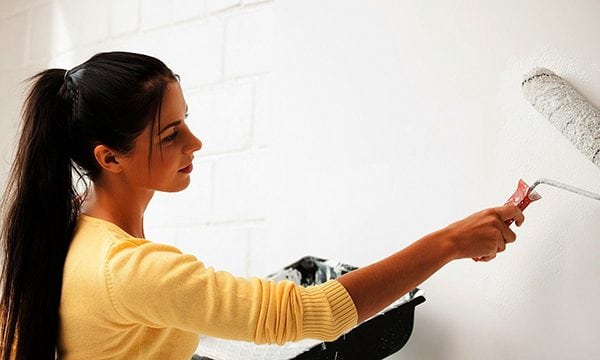During repair work, the main amount of time is spent not so much on applying finishing materials as on preparing the base. Removing old paint is one of the most time-consuming and time-consuming operations. Fortunately, there is an alternative way to carry out work - primer on old paint. How to primer the surface and what mixtures to use will be discussed in this article.
- general information
- Priming
- Foundation preparation
- Padding
- Famous Brands Overview
- Primer VD-AK-0301
- Neomid
- Optlux
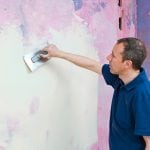
general information
If the old paint layer is covered with cracks and peels off, there can be no talk of painting such a surface on the old layer. However, often the coating retains good adhesion, and such that the paint is very difficult to remove with a scraper. In such cases, it is quite possible to make a primer on the old paint.
It must be borne in mind that the paint gives the surface smoothness. The surface becomes slightly porous. Thus, adhesion, that is, the ability of dissimilar materials to adhere, is significantly impaired. If the paint does not hold well, a new repair will soon be needed. To eliminate such problems, special primers are produced. The most popular brands of such soils will be described in more detail below.
To understand why a primer is needed, you will need to consider the differences between the primer and the paint composition.
There are only two such differences, but they are of decisive importance:
- The soil is much less pigmented substances.
- The mixture includes special additives, due to which the paint acquires the necessary properties, including improved adhesion between materials, accelerated drying, antiseptic qualities.
So, the paintwork is not able to replace the soil. However, in some situations, a water-based paint can be used instead of a primer. The proportion should be 1 to 1. There is a special primer and at the same time a coloring composition for Zinga metal. However, using paint instead of a primer is most often not economically feasible, since paints and varnishes are always more expensive.
to contents ↑Priming
In order for the primer to provide high quality work, a number of conditions must be met:
- The coating should not be glossy. If it is still glossy, you will need its rough grinding.
- Paint should not peel off. Where the paint is peeling, it must be removed.
Note! If the new paintwork material is of the same type as the old, you can do without priming. For example, water-based acrylics blend well with acrylic and latex acrylic paints. An oil paint can be applied to an oil base, an alkyd compound can be applied to an alkyd one, etc. But with the right preliminary preparation, you can paint with acrylic oil.
to contents ↑Foundation preparation
Before applying the primer, it is necessary to prepare the base.
Work execution order:
- First, remove peeling paint from the surface. We shoot not only flaky places, but also 5-10 centimeters of space nearby.
- We clean surfaces from dust and dirt. To do this, use a dampened sponge and a household chemical.
- We process the cleaned place with a universal primer and putty.So we get rid of surface irregularities. Do not forget to level all chips and scratches.
- We complete the preparatory work by grinding the putty surface. To do this, use fine-grained sandpaper. We must get a perfectly even coating.
to contents ↑
Padding
Preparation and application of the soil is carried out in the following order:
- Stir the composition thoroughly. If this is not done, the surface will not be uniform.
- Primer compositions are distinguished by a thick consistency. To make it easier to apply the primer, it is recommended to slightly dilute it with water. However, the proportion of liquid should not exceed 10 percent.
- Pour the prepared solution into a container. It is best to use a special flat paint tray.
- We moisten the roller in the primer mixture and squeeze it on a special platform (if there is a paint tray).
- Apply soil to the surface using a roller. Apply the solution evenly. The layer should not be too thick. We try to avoid drips. To do this, carefully rub the composition on the surface.
- Places that are difficult to reach with a roller are processed with a brush.
- To ensure proper adhesion, after drying the first layer, apply the second. The optimum temperature for drying the soil is 20-23 degrees above zero, and the relative humidity should be in the range of 70-80 percent. Under such conditions, the surface will dry in about an hour.
- The work is completed, it remains only to rinse the tool in water.
Attention! If the primer gets into your eyes, immediately rinse them under running water. Moreover, the washing should be carried out for 10-15 minutes.
When the primer has dried, you can begin to paint the surface. However, an explanation is needed here: the conditional and final drying times are different for different manufacturers. You can find out specific numbers by reading the instructions from the manufacturer. An adjustment should also be made for environmental characteristics (humidity and air temperature).
Note! Surfaces previously painted with waterborne dispersion paints do not have to be primed.
to contents ↑Famous Brands Overview
Below we will consider the consumer properties of several well-known brands of primers on the Russian market.
Primer VD-AK-0301
This primer is used before applying acrylic paint. Specially designed for processing not only absorbent substrates, but also old paints.
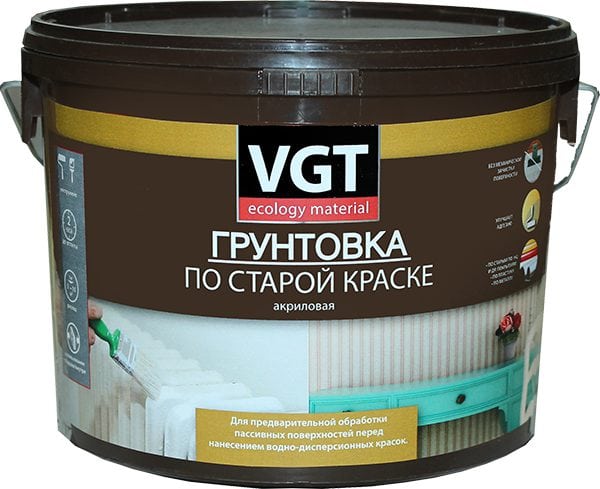
In the manufacturer's instructions, the following characteristics of this soil can be distinguished:
- A guarantee is given for compatibility with old coatings, painted with enamels based on a pentaphthalic binder, nitrocellulose and oil paints, as well as plastic and PVC.
- When the soil dries, a milky-white uniform film remains on the surface.
- The consumption rate of the material is 200 grams per square meter.
- If water is added to the solution, its proportion should not exceed 7 percent.
- The minimum temperature that the soil can withstand is 40 degrees below zero for a month.
- The maximum number of freezing and thawing cycles is 5.
- Drying time "on stick" does not exceed 2 hours.
- Final drying under favorable environmental conditions occurs within 24 hours.
Neomid
This composition is highly versatile. As follows from the instructions, "Neomid" is suitable for aqueous emulsion paints and any enamel compositions based on organic solvents.
The main parameters of the soil:
- The composition contains an acrylic aqueous dispersion, a binder polymer, a mineral filler, a pigmenting agent, and special additives to improve adhesive properties.
- The maximum allowed proportion of water in the solution is 10%.
- Drying at the optimum temperature and humidity occurs within an hour.
- The composition is applied in only two layers (with a break for drying the first layer).
Optlux
This primer also applies to wagons. A primer is allowed for oil and nitrocellulose coatings, for enamels based on a pentaphthalic binder. Also, the primer can be applied to varnished surfaces, concrete substrates. Optilux is also suitable for preparing walls for wallpaper decals.
Information from the instructions from the manufacturer:
- The primer is based on an aqueous acrylic dispersion with the addition of pigmenting and polymeric substances, a mineral filler, as well as additives to improve adhesion.
- The primer consumption rate is from 100-200 grams per square meter (the indicator depends on the type of substrate and environmental conditions).
- Surface drying occurs within an hour.
- Soil is able to withstand 5 cycles of freezing and thawing.
- A special note from the manufacturer: priming can be done on an unpolished surface.
So, although the representativeness of the review cannot be considered sufficient, some conclusions can be drawn:
- Firstly, all primers for oil paints or enamels based on organic solvents are made on the basis of acrylic water dispersions.
- Secondly, since the first condition exists, work is possible only at positive temperatures.
- Thirdly, such primers can only be stored at positive temperature.
Priming will greatly facilitate and speed up the finish, as well as ensure the long-term quality of repair work. It is recommended that you carefully approach the surface preparation before applying the primer. Also, one should not save on primers, since it will depend on them to a large extent how long the finish paint will last.

